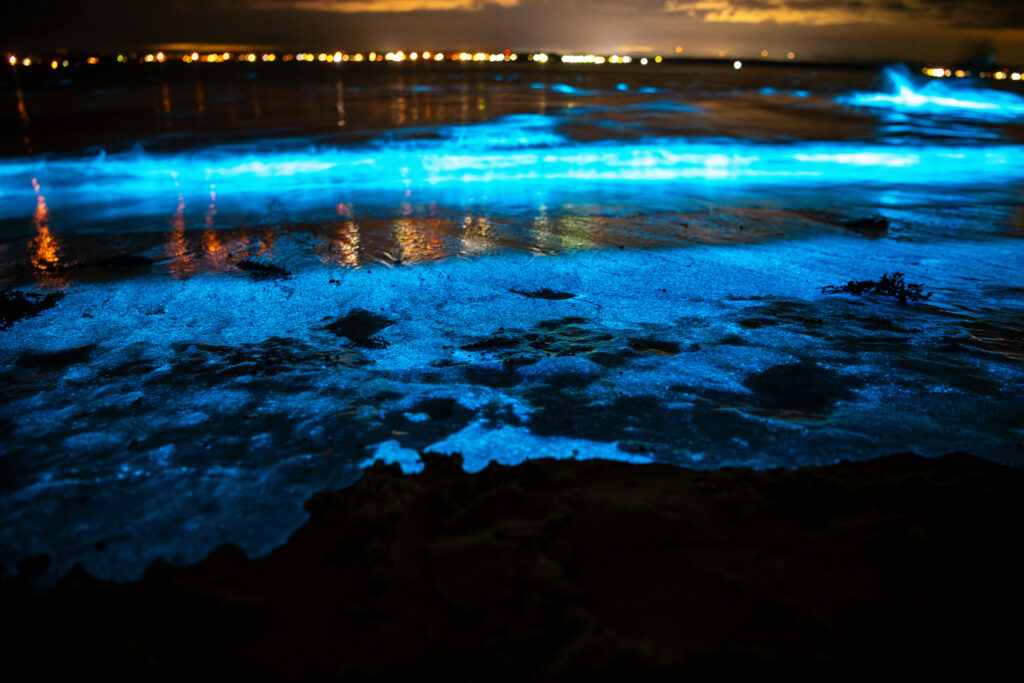A Strange Phenomenon, Hundreds of Years in the Making
For centuries, sailors have reported eerie, glowing seas stretching for miles across the open ocean. These rare events—often described as ghostly white or blue blankets of light—have puzzled explorers, scientists, and meteorologists alike. Now, thanks to satellite technology and new climate research, scientists believe they’ve finally solved the mystery: the glow is real, and it’s closely tied to long-term weather and climate patterns.
Known as “milky seas,” these events have been documented as far back as the 1600s. But because they occur infrequently and in remote parts of the ocean, they’ve remained largely unexplained. The breakthrough came when scientists used low-light satellite imaging to capture these glowing patches from space, revealing that milky seas are far more widespread—and more connected to environmental conditions—than once believed.
What Causes the Ocean to Glow?
The glowing effect is caused by a specific type of bioluminescent bacteria that emits light when it reproduces in massive quantities. Unlike the quick flashes seen in some marine organisms, these bacteria produce a steady, soft glow that can last for hours—or even days. When ocean conditions are just right, they form massive glowing patches that can span hundreds of square miles.
Recent studies have shown that these conditions often align with specific climate and weather patterns, including changes in ocean temperature, salinity, and currents. Warm water, calm seas, and stable atmospheric conditions appear to create the perfect environment for these bacteria to thrive and glow in unison.
Climate Patterns Play a Key Role
One of the most fascinating discoveries is how large-scale climate cycles like the Indian Ocean Dipole or El Niño events may increase the likelihood of milky seas. These long-term patterns affect sea surface temperatures, rainfall, and ocean circulation—all of which influence the microbial life in the ocean.
As scientists track climate variability over time, they’re beginning to notice that years with warmer ocean temperatures often coincide with more frequent reports of milky sea events. In this way, the glowing oceans are more than just a curiosity—they could serve as indicators of broader environmental changes.
The Role of Satellite Technology in Unlocking the Mystery
One of the reasons this mystery remained unsolved for so long is that milky seas are difficult to observe from land or ships. But modern satellites equipped with sensitive low-light sensors have changed the game.
By reviewing night-time imagery collected over several years, researchers have been able to detect glowing ocean patches and link them to weather records and ocean data. This combination of space-based observation and earthbound science has brought a centuries-old mystery into clearer focus—and provided yet another example of how climate science is evolving.
A Beautiful Reminder of a Changing Planet
While the sight of a glowing sea might seem like something out of a fantasy novel, it’s now being recognized as a natural response to shifting climate conditions. These events, though beautiful, reflect deeper changes happening in the oceans—changes that could impact everything from marine ecosystems to weather patterns across the globe.
As scientists continue to study milky seas and their connection to climate, they hope to better understand how our oceans are responding to a warming world. In the meantime, the next time you hear about glowing waters lighting up the night, know that they’re more than just a maritime mystery—they’re part of the planet’s story.


